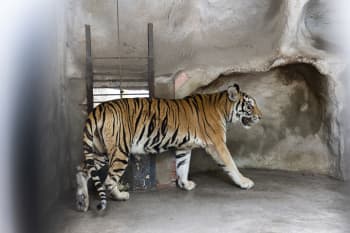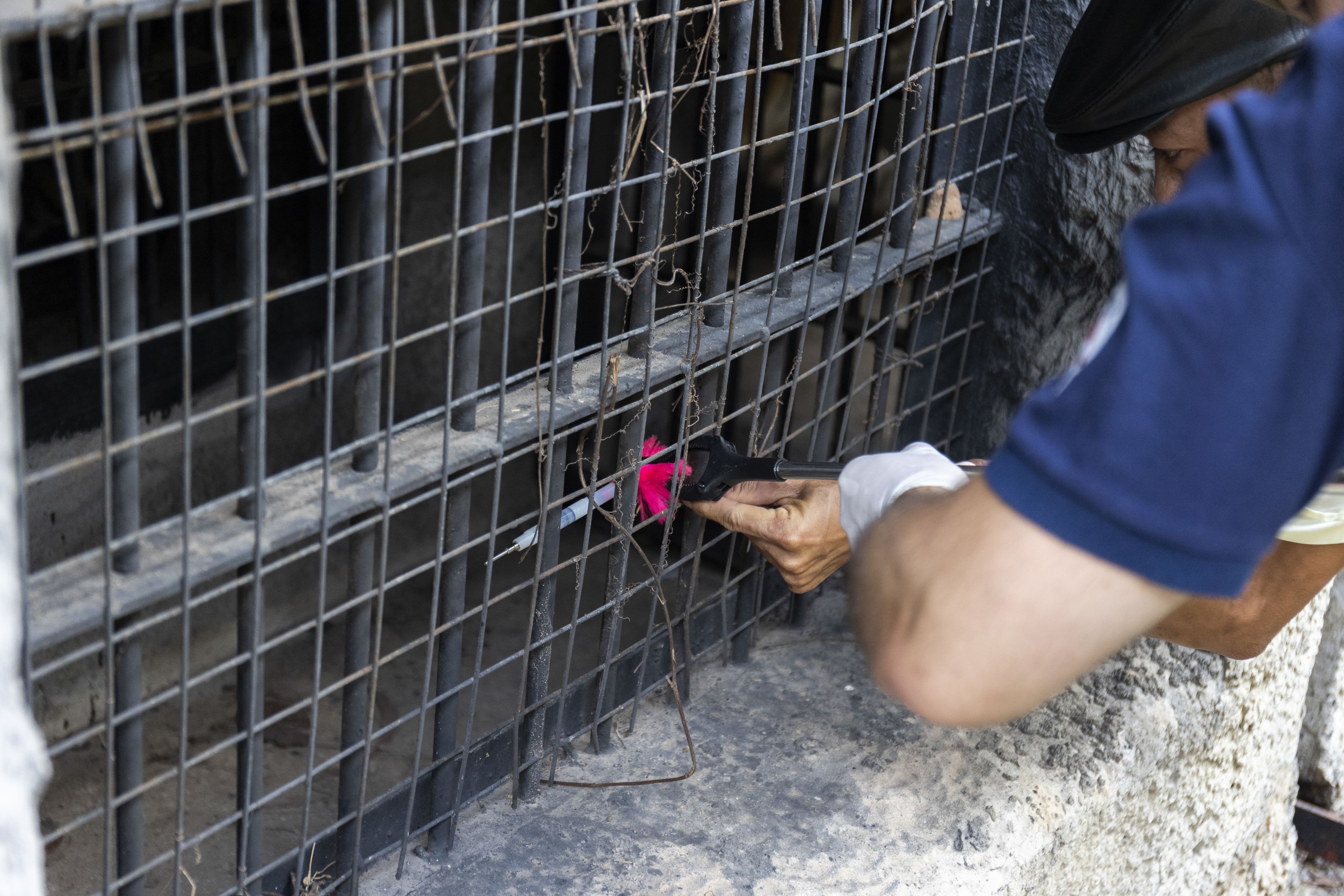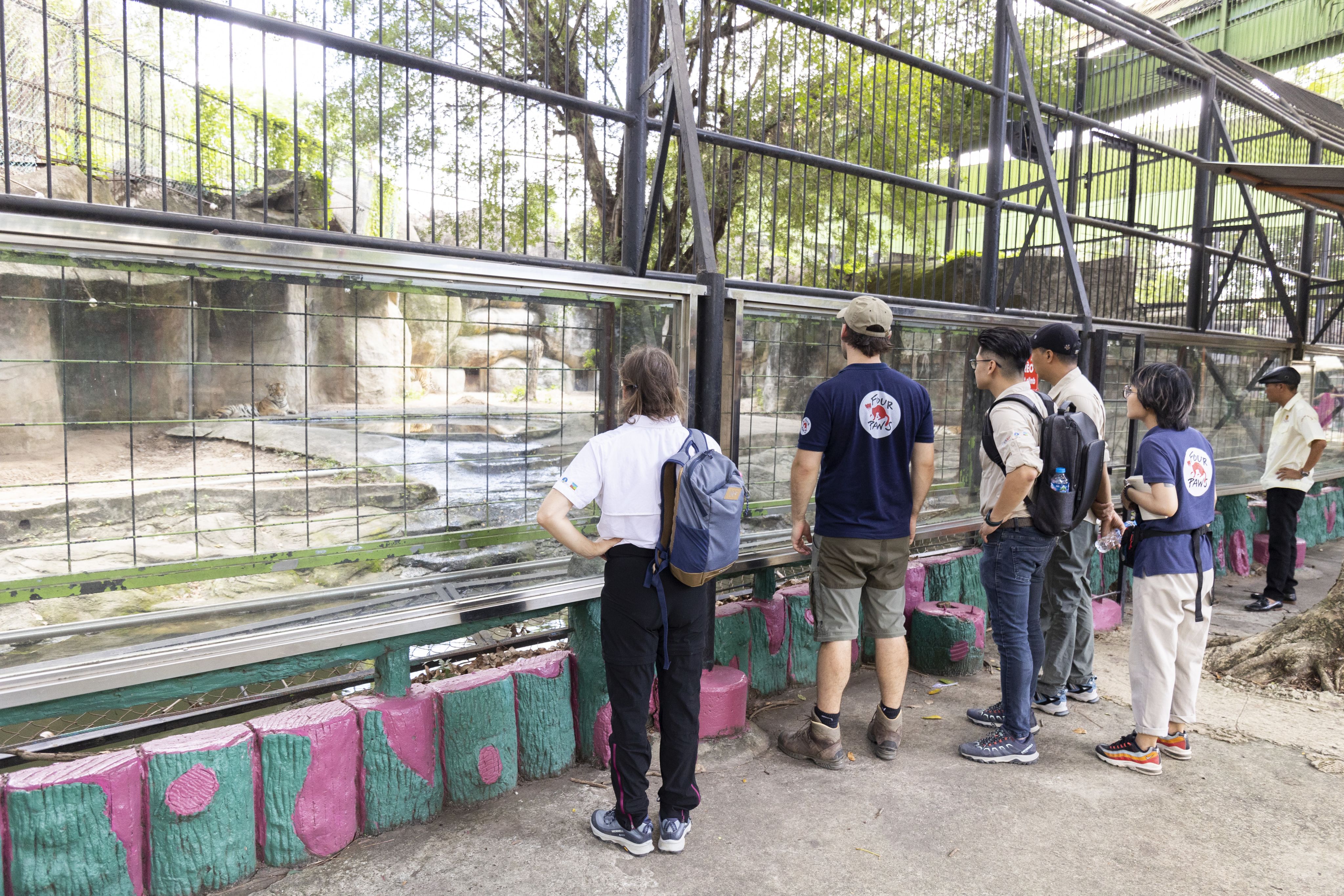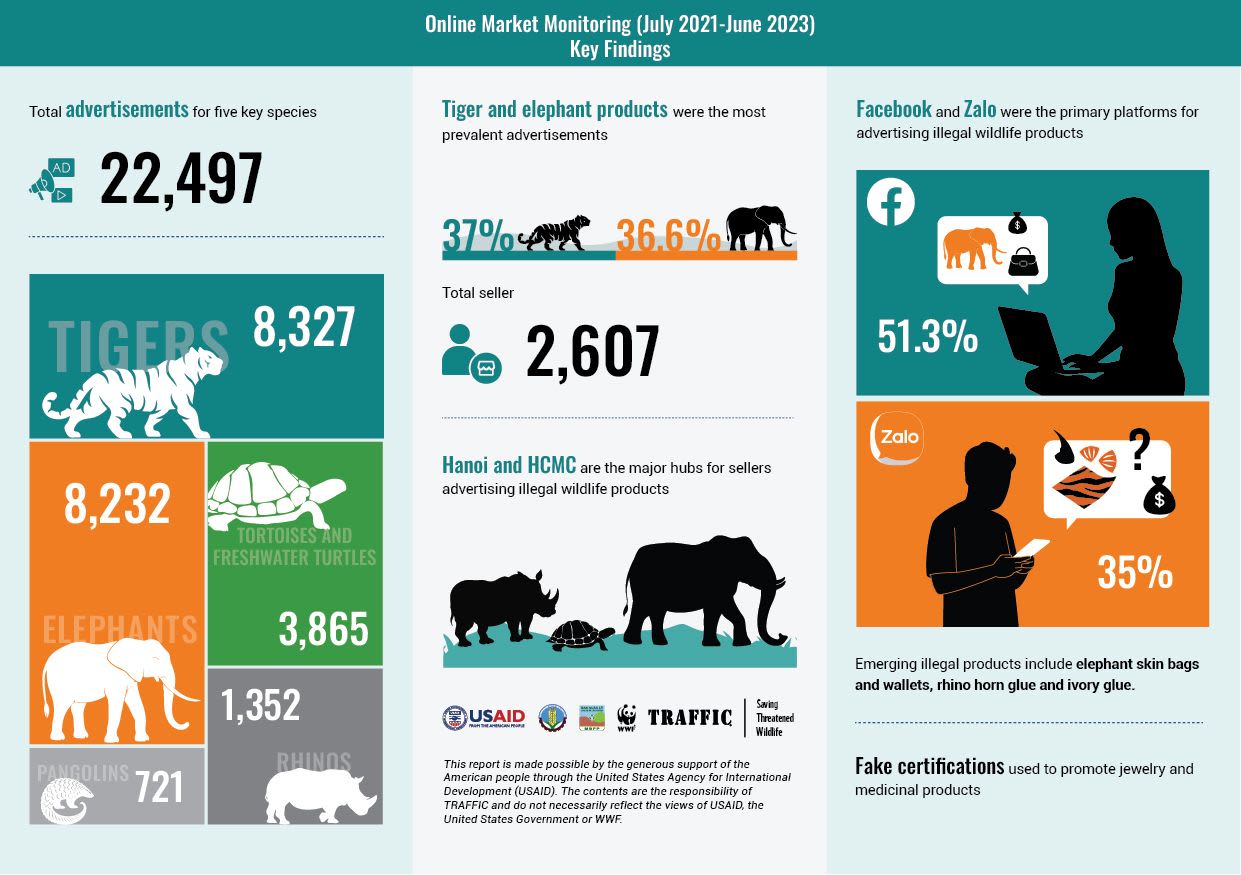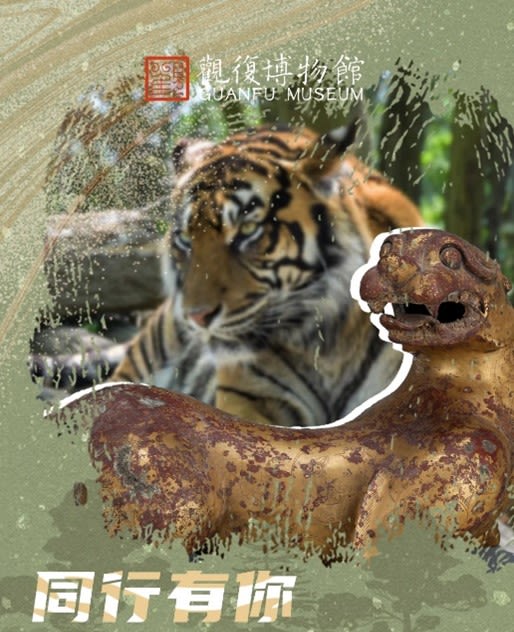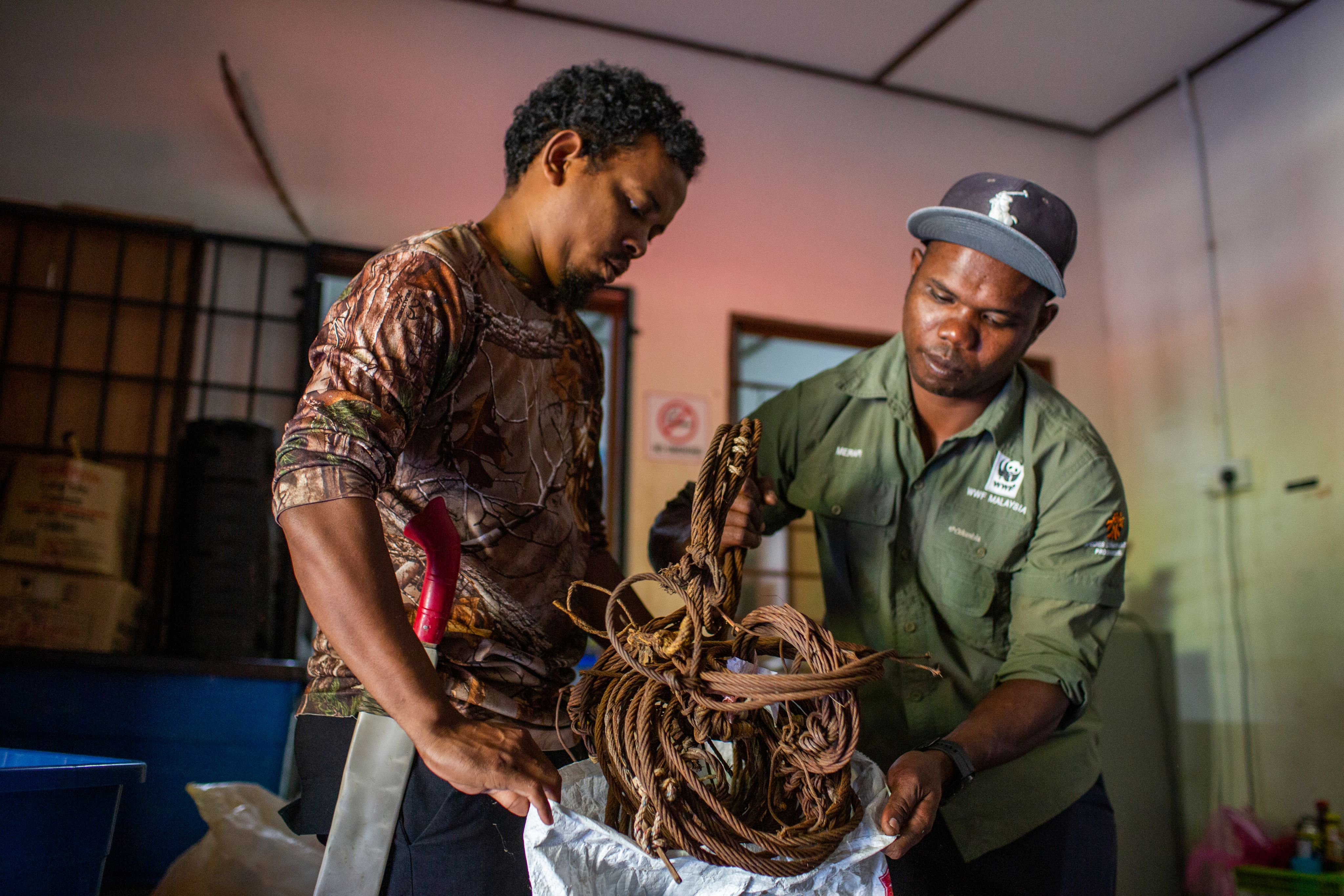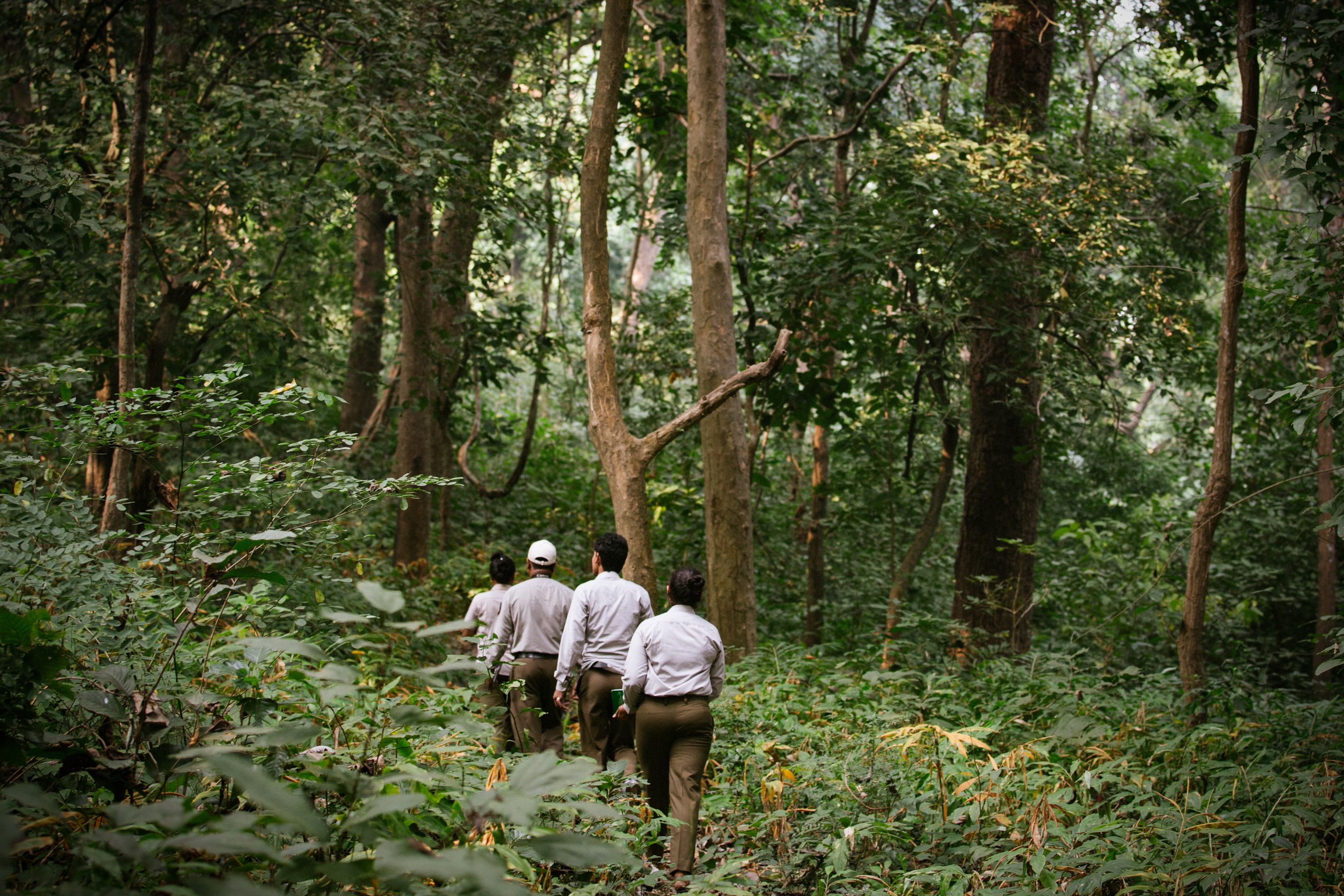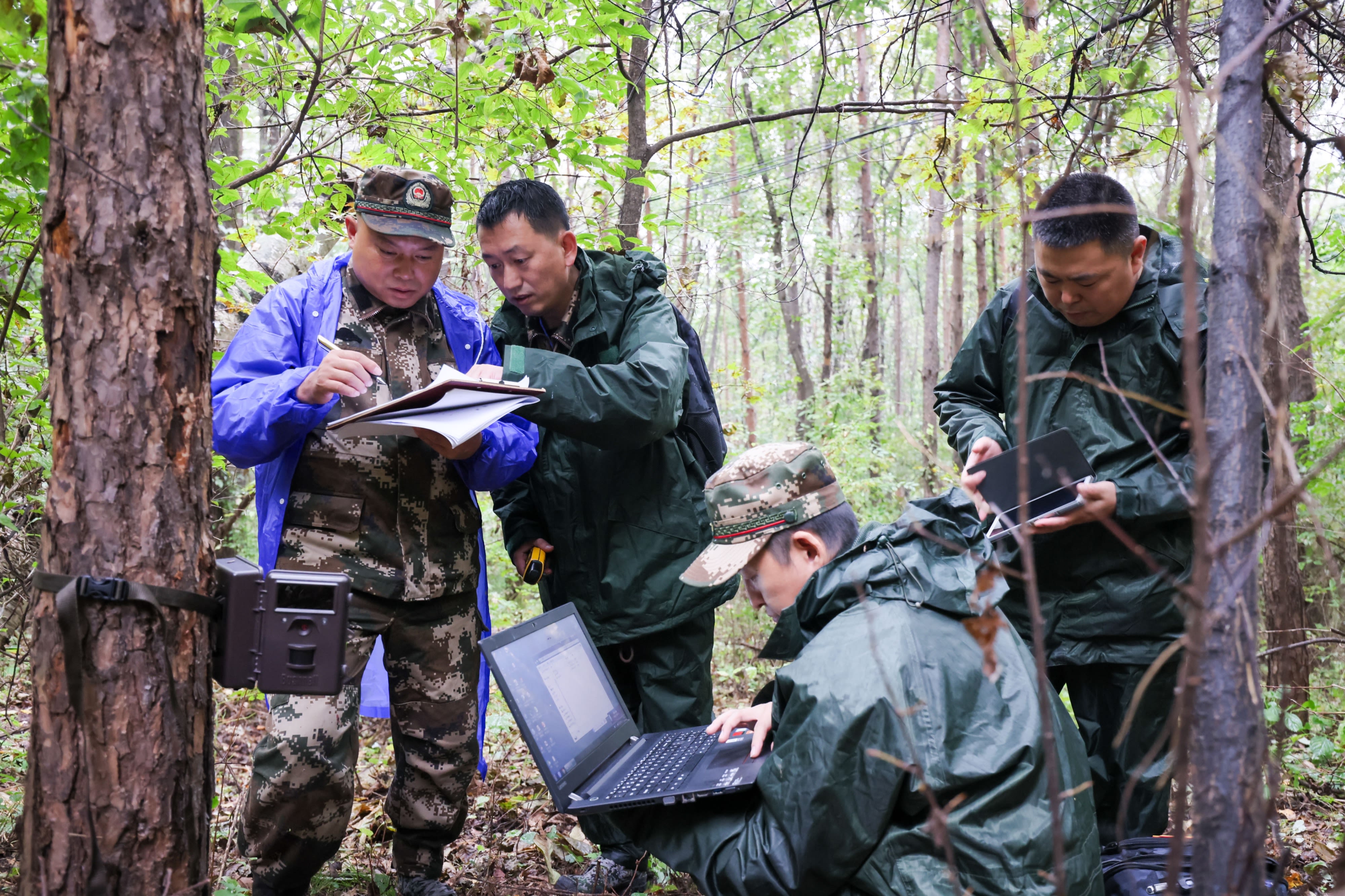End Exploitation
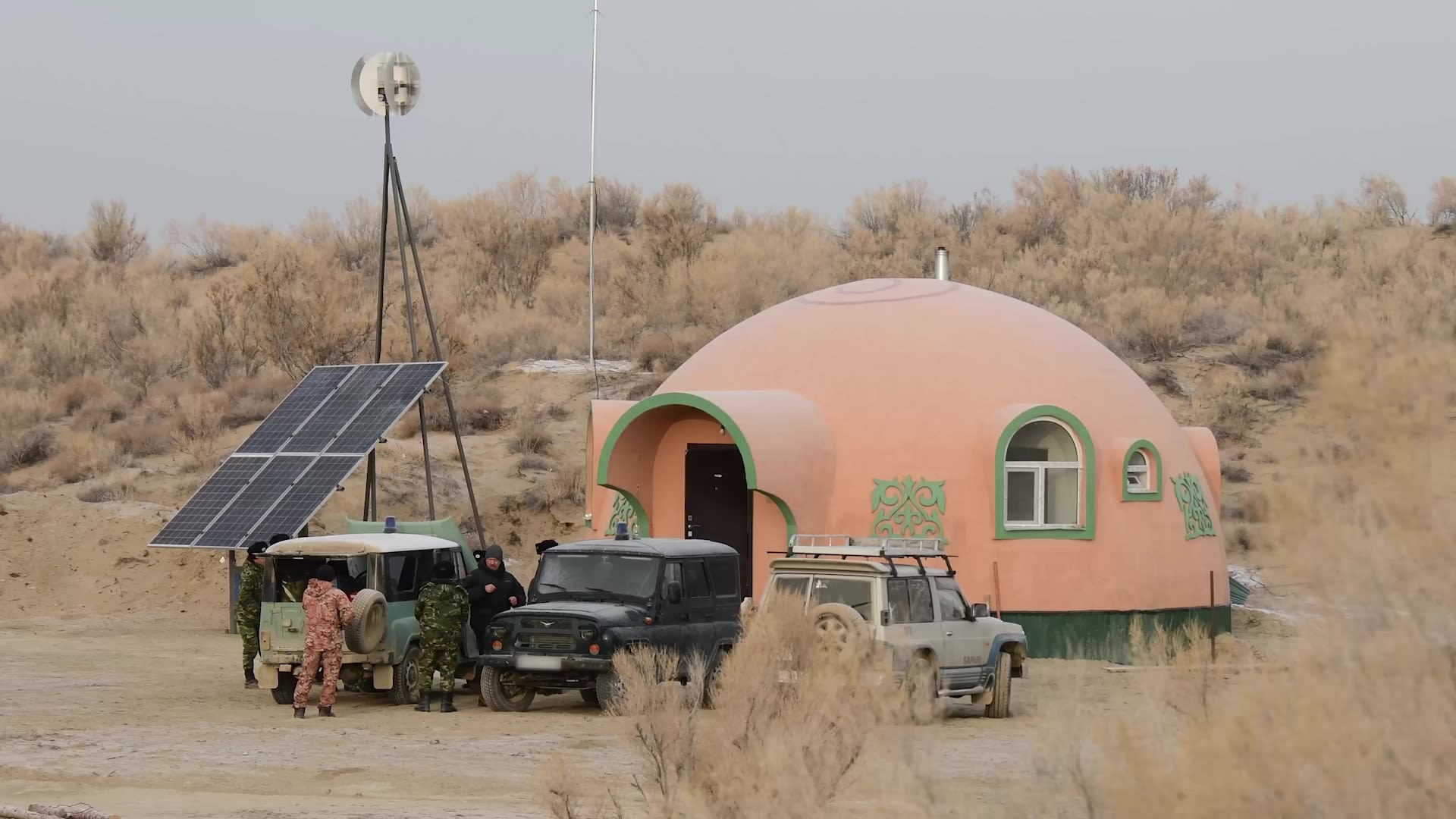
The exploitation of tigers for their body parts and derivatives continues to be a significant challenge in tiger conservation. WWF’s efforts to address issues like snaring, wildlife poaching, and the illegal wildlife trade require unified approaches from across organizations. The new tiger conservation strategy focused on ending this exploitation—developed and implemented in partnership with TRAFFIC—highlights the importance of not only addressing drivers of illegal trade by reducing the demand for tiger parts and derivatives, but also addressing the demand for tiger prey, for their meat and other uses. This broader approach is crucial for supporting tiger population recovery.
REDUCING TIGER TRADE: Closing Captive Tiger Facilities of Concern
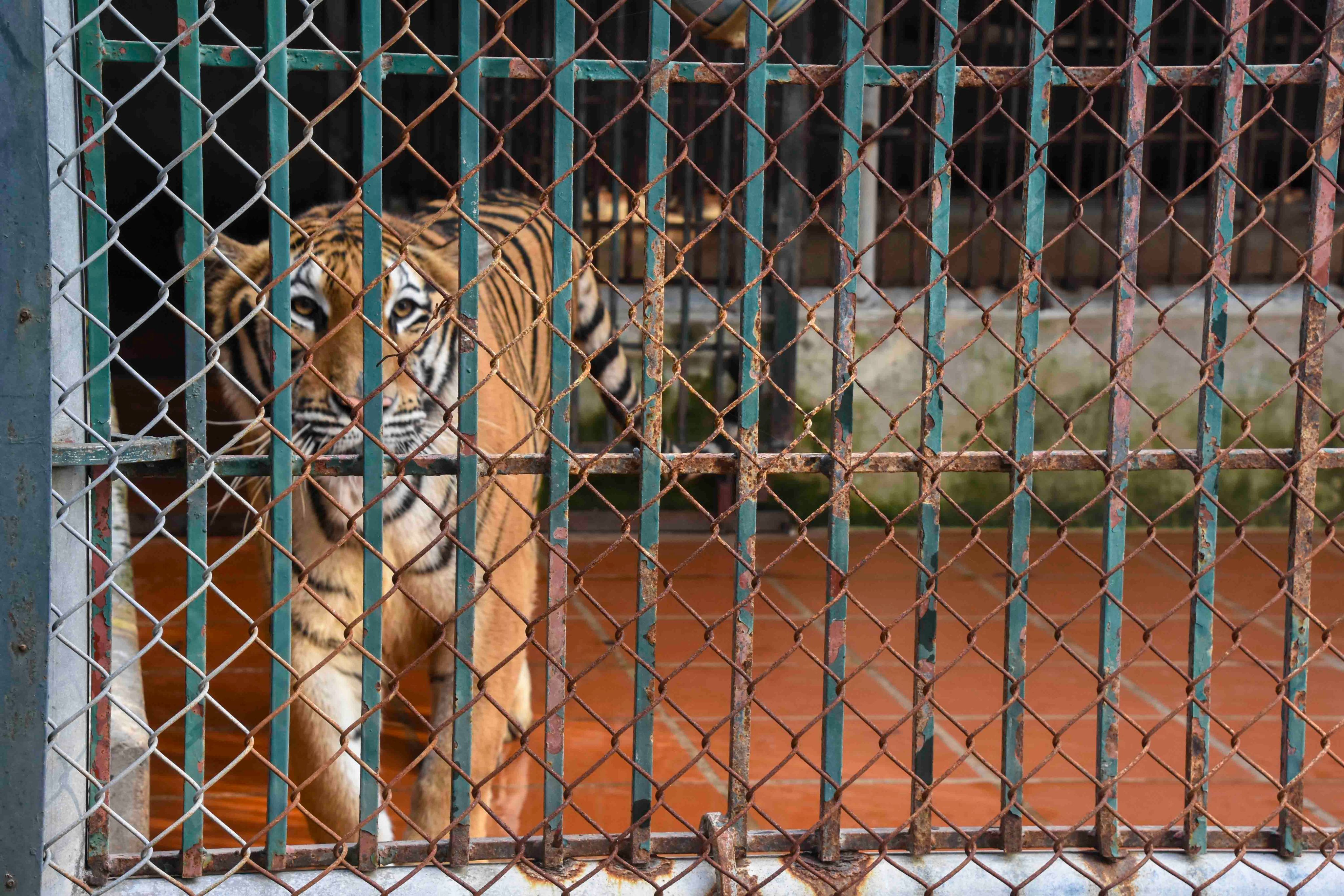
Tiger claws and a tooth for sale illegally in a shop in Hanoi, Viet Nam. © Heather Sohl
Tiger claws and a tooth for sale illegally in a shop in Hanoi, Viet Nam. © Heather Sohl
CITES Animals Committee
At the 33rd meeting of the CITES Animal Committee in July 2024 WWF advocated with partners that more guidance was needed for governments to effectively regulate captive tiger facilities than the existing IUCN SSC Guidelines on the use of ex situ management for species conservation provided to ensure breeding is only allowed for conservation purposes. Some additional guidance is available in Roadmap to Closing Captive Tiger Facilities of Concern, which has been developed further by WWF with NGO partners for consideration at the CITES Standing Committee meeting in Feb 2025.
Captive Tiger Inspection Guidance
To address a gap in guidance for governments carrying out inspections of captive tiger facilities WWF and TRAFFIC with partners developed the General Guidance for the Inspection of Captive Tiger Facilities. Use of this guidance will help ensure compliance with laws, prevent illegal trade in tiger parts and products, and uphold animal welfare and safety standards, while supporting the phase-out of non-conservation breeding operations. This guidance provides detailed information on captive tigers and their care, and guidance on questions to ask and observations to make during inspections, which enable those undertaking the inspection to identify issues of concern, which include live and dead tigers and their parts and products entering commercial trade, poor animal welfare conditions, human safety risks, and/or a lack of effective management which may facilitate involvement in trade, poor welfare conditions or risk of human injury/death. The guidance was approved by the Laos Government in November for national use, but it has been written to be useful across all countries and can be adapted to fit the national context as needed.
FEATURE STORY
Saving Threatened Wildlife in Viet Nam
The last traces of tigers in the wild in Viet Nam were found nearly 30 years ago. Today, wild tigers are nationally extinct, with the species now only existing behind the bars of captive facilities. A combination of threats—including snares, habitat loss, declining prey, and illegal tiger trade—have all contributed to the tragic loss of wild tigers in the country.
Currently, there are nearly 400 captive tigers in Viet Nam, housed in a mix of facilities. While these facilities are often legal, they frequently lack proper regulations and oversight. This opens the door for tigers, their parts and products to be sold illegally. To address this, WWF-Viet Nam, through the USAID Saving Threatened Wildlife Project, is supporting government inspections of captive tiger facilities and collecting DNA samples to create a national database of captive tigers.
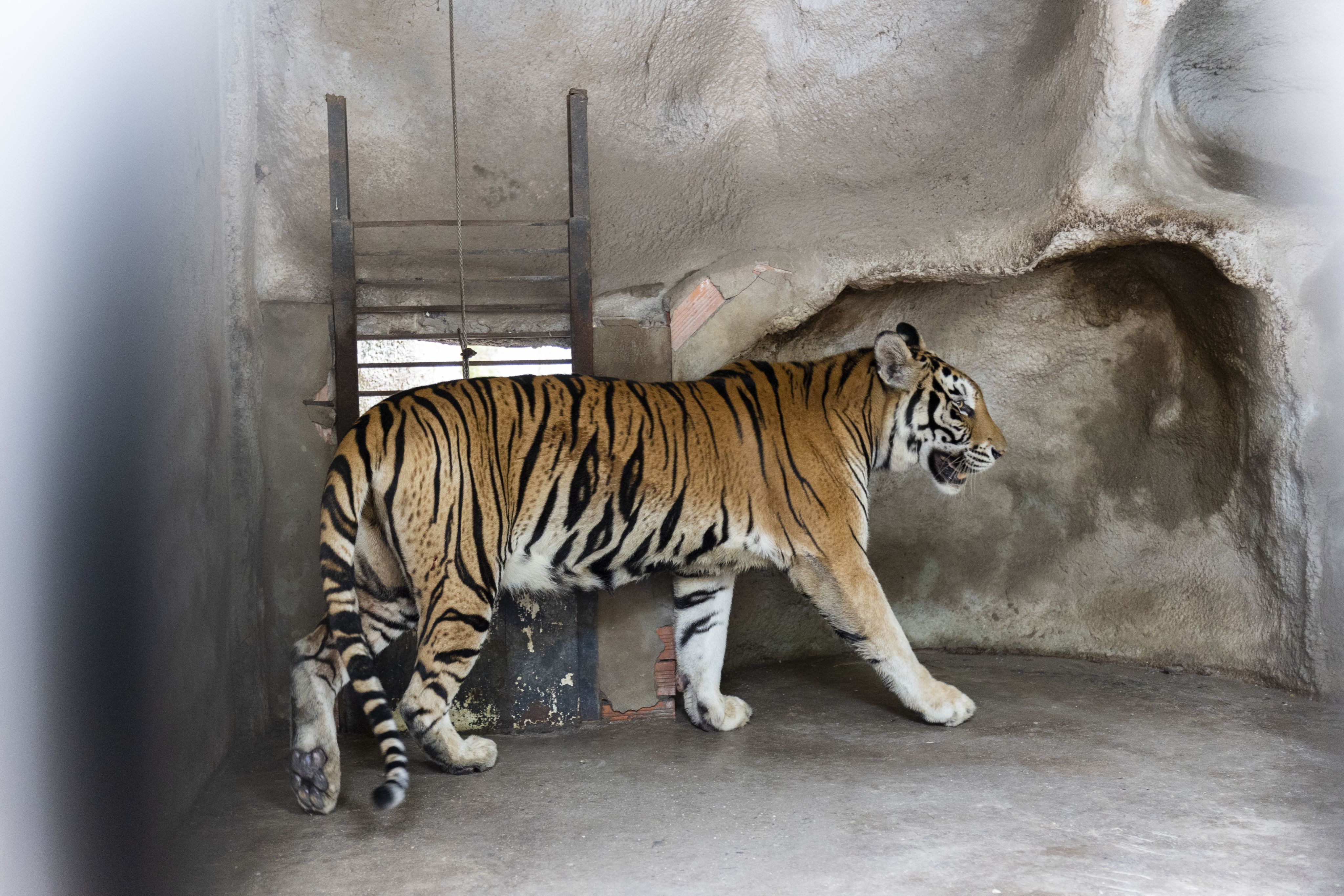
“Currently all inspections and checks of tigers are performed visually, leaving gaps for illicit activities,” says Anh Le, Policy Manager for the USAID Saving Threatened Wildlife Project.
Anh Le is the policy manager for Saving Threatened Wildlife project at WWF-Vietnam. © Anh Le
Anh Le is the policy manager for Saving Threatened Wildlife project at WWF-Vietnam. © Anh Le
“Therefore, one area of improvement is to address this. Having a national database of DNA samples of all captive tigers helps the authorities to definitively distinguish between individual tigers, determine whether tigers have been moved between facilities, and figure out if registered tigers have entered illegal markets."
Anh emphasizes the added value of including photographs of each tiger’s unique stripe patterns in this database. "Each tiger’s stripe patterns are unique, like our fingerprints," he explains. "This would help authorities not only identify tigers in the facilities but also those found in illegal trade." Together, the DNA and photographic databases would ensure proper management of captive facilities and provide law enforcement with the tools needed to combat tiger laundering and illegal trade in Viet Nam.
In addition to the challenges of illegal trade, Viet Nam recently faced another crisis with captive tigers. In August and September 2024, 51 captive tigers, lions, and leopards were disposed of after an outbreak of avian flu (H5N1) at two privately-owned zoos in Southern Viet Nam. The outbreak was detected during an inspection, which helped the government respond promptly. This incident underscores the urgent need for effective government management of captive tiger facilities, especially in relation to public health risks, and highlights the importance of a “One Health” approach—integrating animal, human, and environmental health. In response, WWF and its partners have made recommendations to improve the overall management of captive tiger facilities, focusing on husbandry, veterinary care, and animal welfare.
A small DNA sample taken from a captive tiger is processed. © STW Project / WWF-VN / FPD
A small DNA sample taken from a captive tiger is processed. © STW Project / WWF-VN / FPD
Vet retrieves the dart used to extract a small DNA sample from a captive tiger at a facility in Viet Nam. This procedure is minimally invasive for the tiger and the DNA will be entered into a national database to monitor captive tigers. © STW Project/ WWF-VN/FPD
Vet retrieves the dart used to extract a small DNA sample from a captive tiger at a facility in Viet Nam. This procedure is minimally invasive for the tiger and the DNA will be entered into a national database to monitor captive tigers. © STW Project/ WWF-VN/FPD
Anh (third from the left) with his colleagues from WWF and partners inspect a tiger facility in Viet Nam. © STW Project / WWF-VN / FPD
Anh (third from the left) with his colleagues from WWF and partners inspect a tiger facility in Viet Nam. © STW Project / WWF-VN / FPD
Looking to the future, Anh shares his vision: “In 15 or 20 years, I hope to see tigers being reintroduced to the wild in Viet Nam. Tigers once roamed the length of our country, and while much of their historic habitat has been destroyed, there are some sites that can be restored to support a reintroduction. I hope by this point we’ve also made significant progress to reduce consumer demand for tigers, their parts, and products in Viet Nam and across Asia so these tigers can roam safe and free in our country again.”
The work ahead is monumental, but with concerted efforts and a clear vision, there is hope for a future where tigers once again roam freely in Viet Nam’s wild landscapes.
REDUCING DEMAND FOR TIGER PARTS AND PRODUCTS
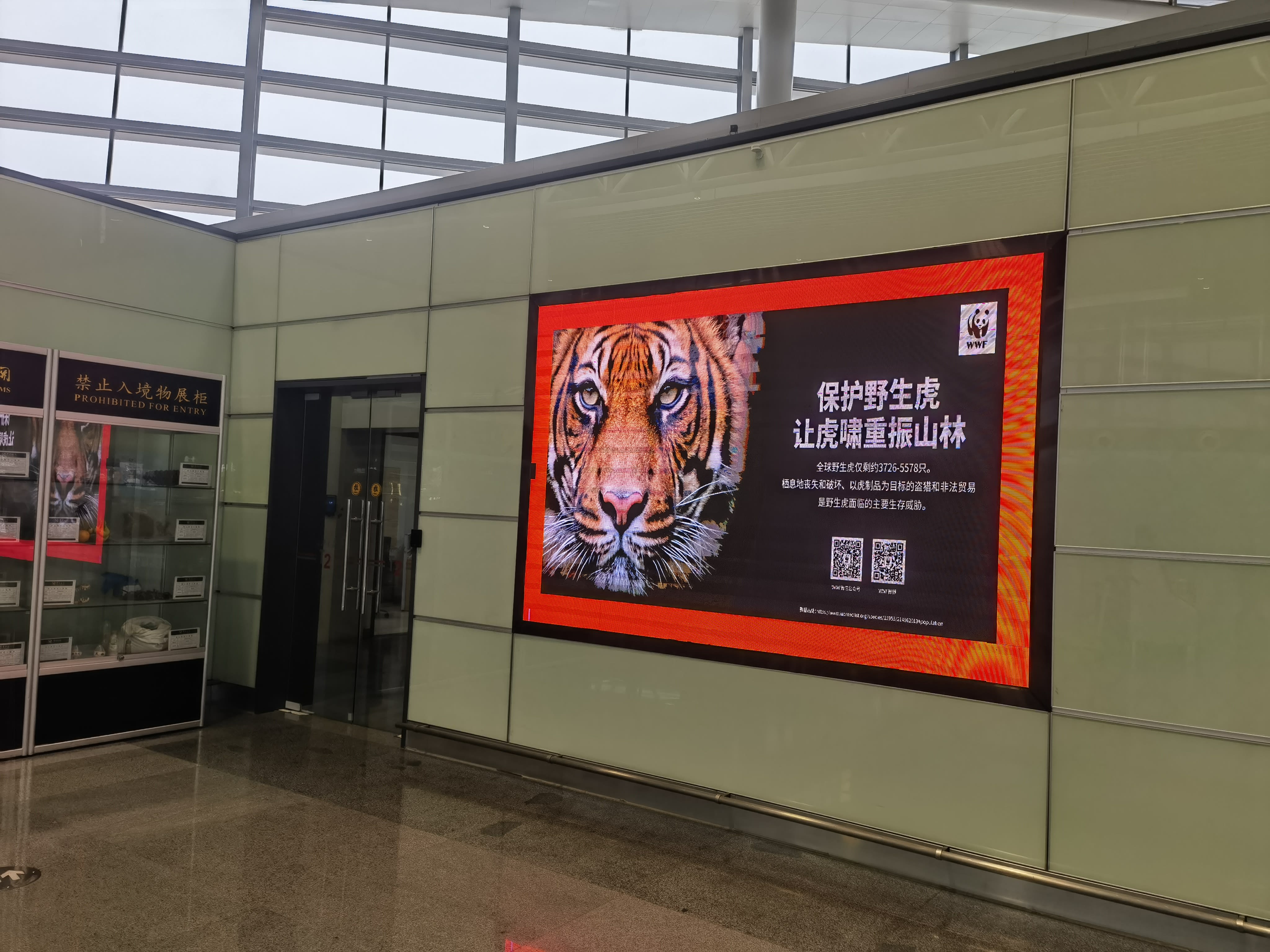
Research into Viet Nam’s online wildlife trade
TRAFFIC online market monitoring between June 2021 and July 2023 revealed the widespread availability of products from endangered species across major e-commerce and social media platforms. Tiger products (8,327 advertisements, 37%), elephant ivory (8,232 ads, 36.6%), rhino (1,352 ads) and pangolin products (721 ads) were among the highest number of posts highlighting the continued demand in Vietnam and threat to endangered species globally. Facebook and Zalo were the primary platforms for advertising these products.
Claws and teeth were the most common tiger products advertised (81%), mostly sold as pendants or rings.Tiger skin was the next most common item (7.8%), used in rugs or stuffed for use as home décor, followed by bone products (4.5%). Other product types with fewer advertisements were whiskers, heads, penis, feet, mouth, genital and meat (1.3%) and whole tigers (0.6%).
This kind of survey is repeated every six months to collect up-to-date information and anticipate trends. This surveillance helps authorities and conservationists understand current market trends and trading patterns of protected species, which are constantly evolving. The survey report recommendations include that social media and e-commerce companies enhance monitoring, staff training and policies and law enforcement agencies intensify investigations and collaborations with online partners.
Reducing Demand for Tiger Parts and Products in China
WWF China partnered with Beijing Guanfu Museum, the most renowned private museum in China, for an exhibition in September 2024 showcasing nearly 100 cultural relics inspired by iconic wild animals, including tigers. The exhibit highlights the historical and artistic significance of these animals while promoting wildlife conservation. It emphasizes the importance of rejecting illegal wildlife trade and reducing demand among collectors of handicrafts and traditional culture enthusiasts. Expected to draw over 100,000 visitors, the exhibition aims to raise awareness of endangered species conservation, focusing on tigers and other species threatened by illegal trade.
WWF China also launched targeted social marketing campaigns to reduce demand for tiger products through both offline and online channels. Demand reduction posters, featuring legal deterrence and conservation messages, were created and adopted by China Customs as the official illegal wildlife trade materials. Displayed at major airports across China, these posters act as ongoing reminders and deterrents for travellers.
To enhance these efforts, WWF China employs AI-driven social marketing strategies for its online campaigns. Partnering with China’s largest social media platform, WWF uses big data and machine learning to pinpoint key target audiences and optimize campaign reach. These initiatives have engaged over 10 million people and secured 2 million pledges from individuals vowing to become "Tiger Protectors" and reject tiger products.
© WWF China
© WWF China
REDUCING POACHING OF TIGERS AND THEIR PREY
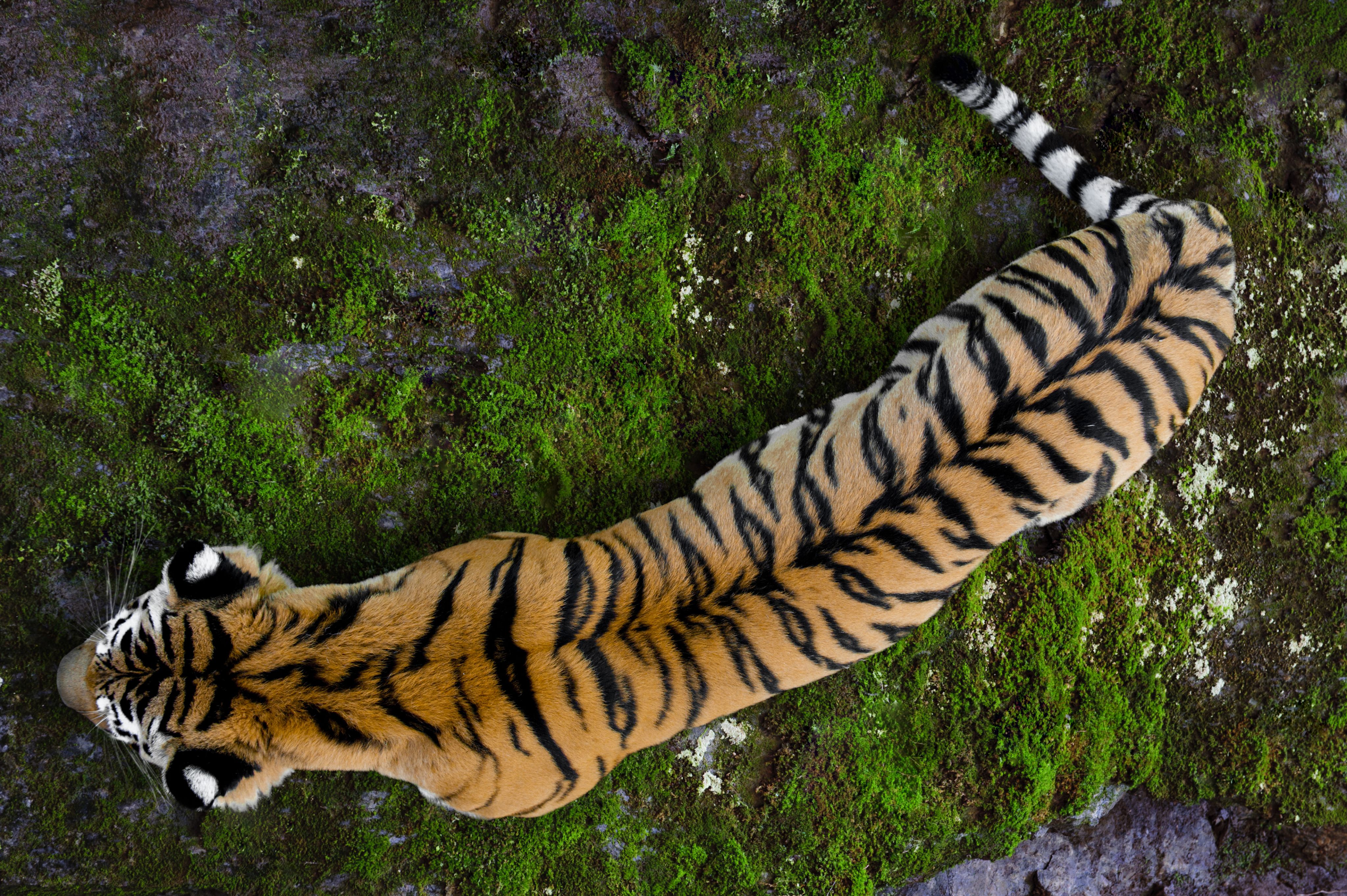
© Emmanuel Rondeau / WWF US
© Emmanuel Rondeau / WWF US
New research highlights urgent need for more rangers
In July 2024, a study led by researchers from WWF Tigers Alive and the University of Central Florida revealed alarming gaps in ranger numbers needed to undertake the varied role of rangers to effectively manage and protect tiger-bearing protected areas. Key findings:
- Ranger Density: Approximately 12,500 additional rangers are required within tiger protected areas in the surveyed countries to adequately protect these sites.
- Financial Requirements: Addressing the ranger shortfall is estimated to cost US$ 45.8 million annually needed to support recruiting more rangers to patrol and safeguard tiger habitats.
- Welfare Needs: An additional US$ 7.8 million annually is needed to meet basic welfare needs for rangers. This includes provisions for adequate equipment, training, and working conditions.
The study underscores that the majority of the ranger shortfall (63%) is concentrated in three Southeast Asian countries (Indonesia, Malaysia and Myanmar) where tiger populations are declining, signalling a direct threat to the conservation of this endangered species.
WWF is using the findings to advocate for measurable goals for increasing the number, and efficacy, of protected area rangers into both National Biodiversity Strategy and Action Plans and national Tiger Action Plans.
Global Conferences supporting site based protection
10th International Ranger Federation World Ranger Congress
The International Ranger Federation 10th World Ranger Congress took place between 7-11 October in Hyères, France. The event brought together over 450 participants from 88 countries. Rangers from the following tiger ranger countries attended the event: India, Nepal, Bhutan, Cambodia, Thailand, Malaysia, Vietnam. Tiger rangers participated as speakers in the SMART session, the ranger-community trust, the code of conduct workshop and the inclusive workforce sessions.
The Inaugural SMART Global Congress (2024)
SMART—the world’s most widely utilized protected area monitoring tool—is a cornerstone in many conservation efforts for monitoring and addressing threats. The inaugural SMART Global Congress (2024) marked a significant milestone for SMART, the world’s leading tool for monitoring protected areas. Since its inception in 2011, SMART has expanded to 1,500 sites in 95 countries. This year’s event brought together over 300 attendees from more than 100 organizations to discuss SMART’s functionalities, challenges, and conservation impact. Key presentations highlighted SMART’s role in monitoring Thailand's protected areas, with a focus on tiger protection. WWF’s ongoing support emphasized its commitment to SMART's success. The congress highlighted SMART’s evolution as a user-driven tool and reinforced the need for continued investment, particularly for the 12 tiger ranger countries that depend on it for monitoring protected areas.
© WWF Nepal / Prasiit Sthapit
© WWF Nepal / Prasiit Sthapit
Award Winning Ranger Teams
© Zora Chan / WWF Malaysia
© Zora Chan / WWF Malaysia
Malaysia
WWF Malaysia’s Tiger Anti-Poaching Team was awarded the Star Golden Hearts Award 2024 placing it among this year’s 10 honourees. The project has supported 130 local Orang Asli (Indigenous People) to be trained in anti-poaching and essential skills such as GPS handling and data collection, fostering both wildlife conservation and economic stability within their communities. The anti-poaching team has achieved a 98% reduction in active snares and deployed over 500 camera traps, providing critical data for monitoring tiger populations and ecosystem health within the Belum-Temengor forest complex. In 2022 and 2023, zero active snares were detected in the forests, and in recent years, camera traps have captured footage of mother tigers and their cubs.
"This award honours the invaluable contributions of the Orang Asli anti-poaching teams, who are on the front lines. Their immense courage, endurance and dedication are crucial in protecting the Malayan tiger from the persistent threats of poaching and habitat loss.”
© WWF China
© WWF China
China
In September 2024, the Jilin "Protector Cup" Wildlife Ranger Competition was co-organized by the Jilin Forestry and Grassland Administration, WWF, Municipal Government, and the One Planet Foundation. The championship was won by Jilin Huangnihe Nature Reserve and the Tonghua Forestry Bureau.
The competition tested rangers' skills in areas such as trap removal, wildlife surveys, disease surveillance, animal rescue, law enforcement, and patrol record-keeping.
The competition provides a platform for rangers to exchange knowledge, build connections, and deepen their expertise. The event also helped raise public awareness about the importance of conservation work. Long-term support for the competition has come from Shanghai Disney Resort, and the winning team will be invited to participate in public welfare activities at Shanghai Disneyland Resort in recognition of their achievements.
A Decade of “Zero Poaching” and a look to the future
Zero Poaching evolved from success in Nepal after the country recorded no rhino poaching over 365 days in 2011 for the first time and subsequently for two more years after that. Although Zero Poaching may create the impression of no poaching at all, it can be defined in different contexts according to time-based targets. For example, it could be zero poaching of a defined species, or suite of species for a particular time period month, or year depending on context. To achieve this, a holistic approach to reducing poaching is required which consists of simultaneously tackling six core pillars:
1. Assessment: understanding the current situation and changes over time.
2. Technology: adopting appropriate technologies can support efficient and effective anti-poaching.
3. Capacity: adequately trained, well-compensated, and supported rangers are more motivated and effective.
4. Community: Working with and supporting local communities, often the custodians of wild places, is critical.
5. Prosecution: Deterrence is a critical component of combatting any crime.
6. Cooperation: Coordinated work across areas, departments and borders can ensure the best efforts to address poaching.
While these pillars remain essential, after a decade of implementation, the framework is being reassessed with partners like Re:wild and the Zoological Society of London to incorporate evolving conservation needs, including gender diversity, human rights, and social safeguards, ensuring effective wildlife crime prevention at the site level.

© naturepl.com / Klein & Hubert / WWF
© naturepl.com / Klein & Hubert / WWF
Enhancing anti-poaching work in China
In 2024, WWF China and its partners supported 3,812 patrols across, removed over 130 active snares across 15,248 sq km of the Northeast China Tiger and Leopard National Park. To enhance patrol effectiveness, WWF and partners developed the "Smart Patrol" platform and WeChat mini program, which integrates features like patrol logging, data collection, assessment, and reporting. This system improves transparency, management efficiency, and real-time monitoring, while promoting the digitalization of ecological protection efforts. It also lays the groundwork for incorporating artificial intelligence to boost patrol accuracy and decision-making.
Additionally, WWF China designed and donated life-sized sculptures of an Amur tiger and an Amur leopard to the NCTLP’s Anti-poaching & Conservation Centre. Made from snares removed in the tiger range, these sculptures serve as educational tools to raise public awareness about conservation and highlight the successes of anti-poaching efforts in China.
Countering Tiger Trade and Poaching in Bhutan
Investigation and legal documentation manuals were developed by WWF Bhutan and rolled out nationally to strengthen wildlife law enforcement and surveillance. Impacting both tiger protection within and outside protected areas in Bhutan, WWF supported building the capacity of 530 officials from law enforcement agencies, including rangers, police and judiciary, on different aspects of wildlife law enforcement and surveillance.
At a site level, towards securing an increasing population of tigers in Bumthang Divisional Forest Office (a hotspot for tigers that lie outside of formally protected areas) WWF has been rolling out the Zero Poaching initiative. A paper by WWF and partners this year showed that Bhutan successfully implemented SMART to enhance management and monitoring in key wildlife corridors, resulting in improved ranger activities, better data availability, reduced threats, and a potential increase in tiger numbers, demonstrating effective conservation efforts.
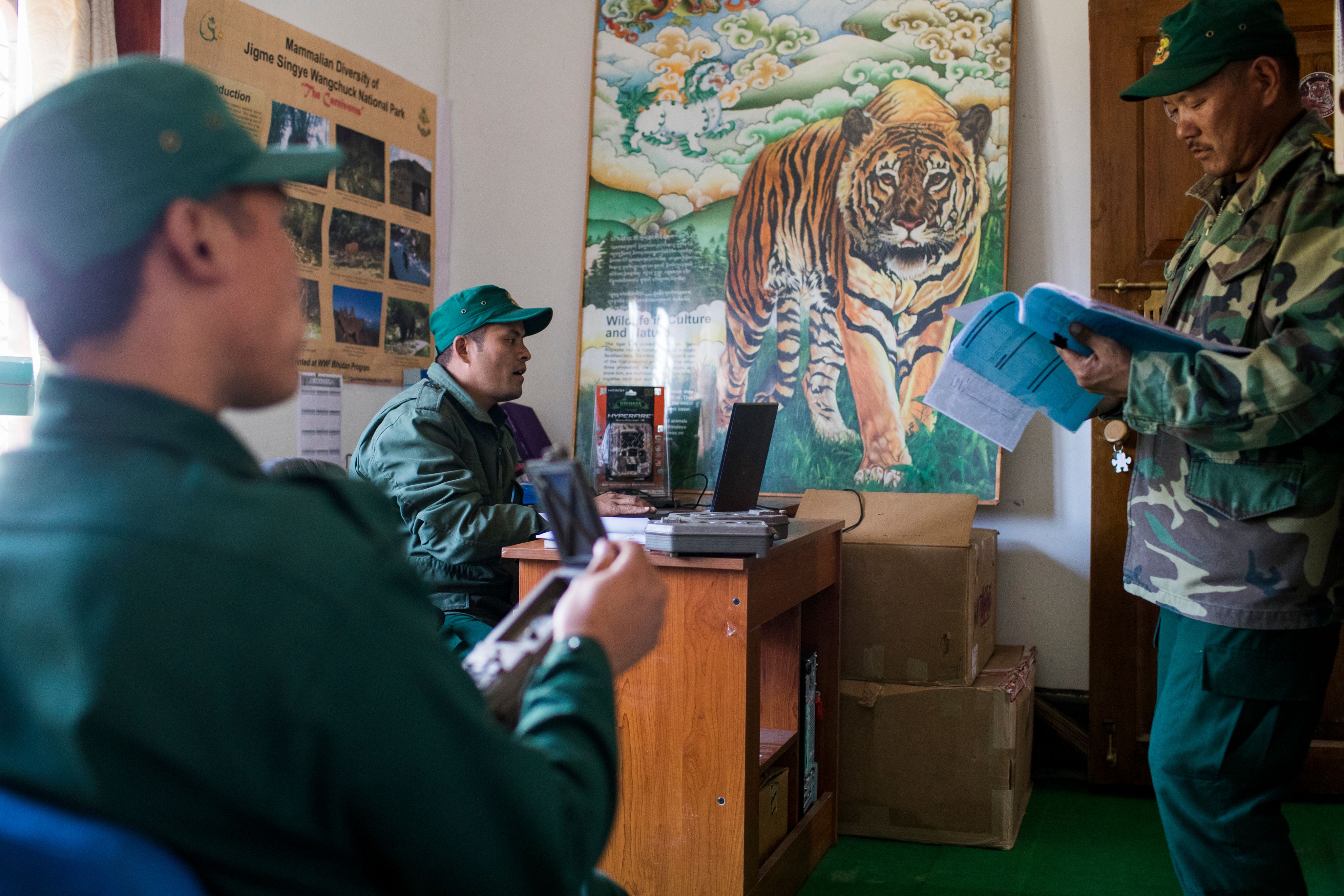
© Emmanuel Rondeau / WWF UK
© Emmanuel Rondeau / WWF UK


